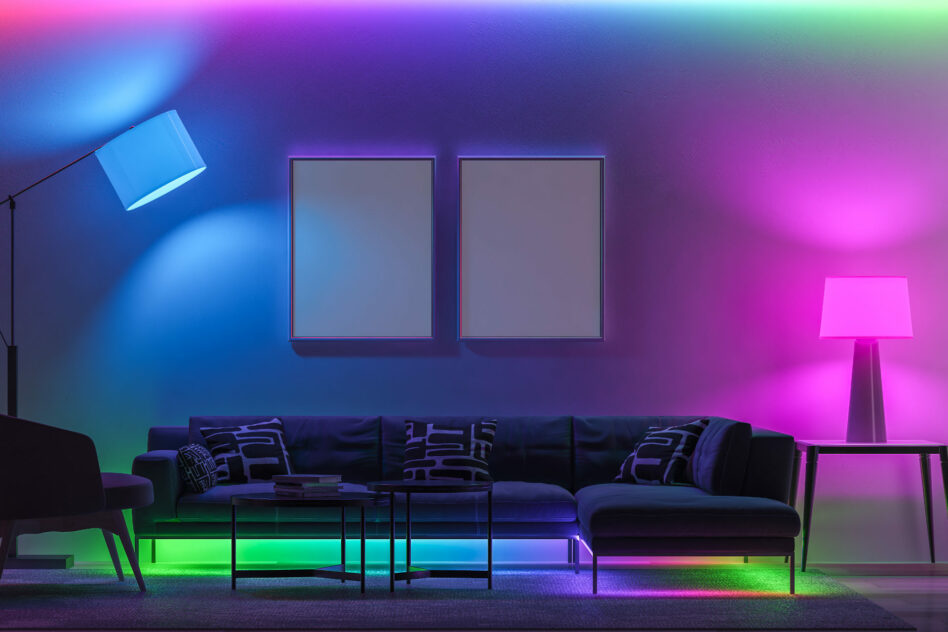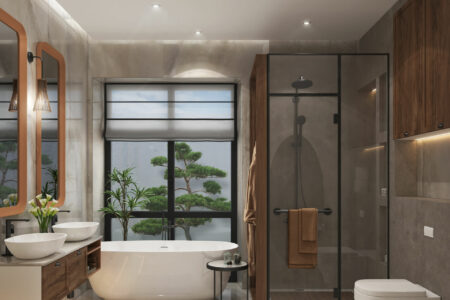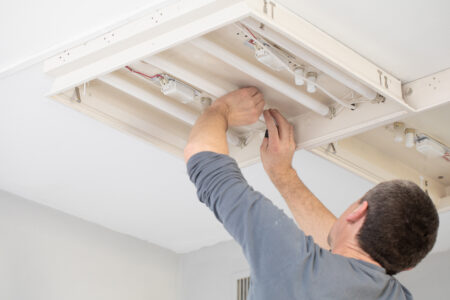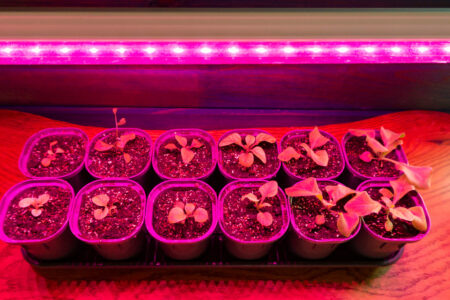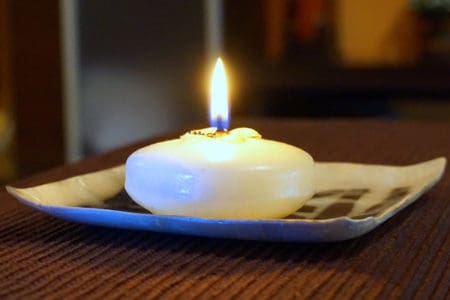You have set up your new RGB LED lights and activated the perfect light color to match your room. But suddenly your lights start changing colors by themselves? Let’s find out why this can happen and how to fix that.
Understanding LED
LEDs, or light-emitting diodes, are tiny electronic marvels that turn electricity into light. They’re energy-efficient and durable, making them a go-to choice for all lighting needs. You can install them in various settings, from indoor spaces to cars.
LED light systems and their functions
A LED light system is made up of a few essential parts, mainly the following:
- The LED chip: the leading player; it’s like the brain of the operation. It takes electricity and turns it into light through a process called electroluminescence.
- Heat sink: the bodyguard; it keeps the LED chip cool and running smoothly.
- Driver: the traffic cop; he ensures the electricity flows just right.
- The lens or reflector: functions as a spotlight; it shapes the light and makes it shine in the right direction.
- The housing is like a suit of armor; it protects all the other parts and holds everything together.
The Different Types of LED lights
Did you know? There’s a LED light for everyone!
With so many choices, you’re bound to find the perfect fit for your unique style. Here are some of them:
Traditional LED bulbs
They resemble conventional home light bulbs but offer greater energy efficiency and longer lifespan.
LED strip lights
You can cut them into any size. Its flexibility is ideal for decoration and creating unique designs.
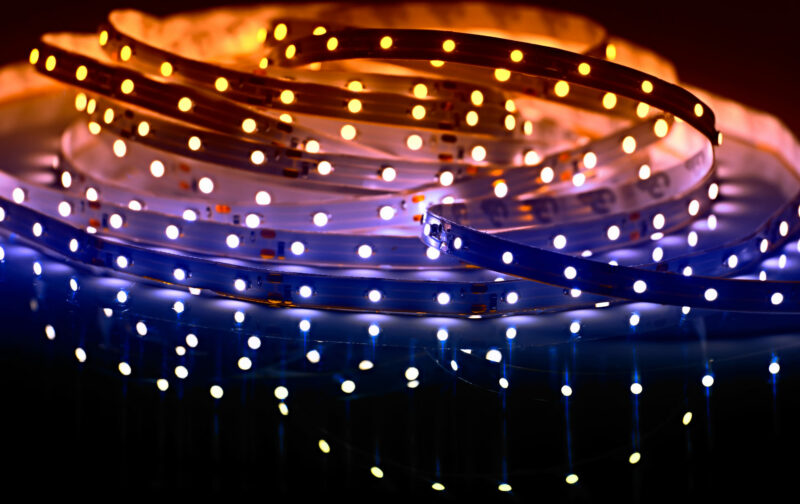
Smart LED lights
These lights are controllable via a phone or voice commands. You can adjust color and brightness and automatically turn it on and off.
RGB LED lights
They can change to any color desired and are perfect for adding flair to a room, setting a particular mood, or being used as decoration.
The Science Behind LED Color Shift
LED lights are like a canvas, and a controller is like a paintbrush. The LED controller allows you to dip into the rainbow of colors and hues, blending and mixing to create a masterpiece of light.
Gone are the days of the primary white light; with a LED controller, you can set the mood and ambiance of any space. LEDs set the scene for a romantic dinner or bring the party to life with vibrant color changes.
The Various Kinds of LED Controllers
Different LED controllers serve specific purposes because they cater to various lighting needs and requirements. Some examples include:
RGB controllers
Blends red, green, and blue lights to produce a wide range of hues and shades. This offers a lot of creative possibilities for color selection and can be used for different types of applications, including residential, commercial, and stage lighting.
DMX controllers
Advanced digital controllers that can control multiple lights simultaneously, making them fantastic for stage and architectural lighting. They can control the color, intensity, direction, and movement.
Programmable LED controllers
Offer more control and creativity options. They can set up specific lighting scenes and sequences and adjust the lights based on motion or light levels.
The Common Causes of Unexpected Color Changes
Sometimes the lights go all funky and change colors like they’re at a rave. It’s like they have a mind of their own! And you might be wondering why your lights suddenly change their colors even if you have not triggered any changes yourself.
But don’t worry, it’s not because they’re having a party without you. It could be because they’re having a little tiff with their controller or their power supply is acting up.
Maybe they’re just feeling a little under the weather and need some maintenance. It could also be because of some pesky wiring or a glitch in their software. But don’t fret; it’s usually just a simple fix, and they’ll be back to normal in no time.
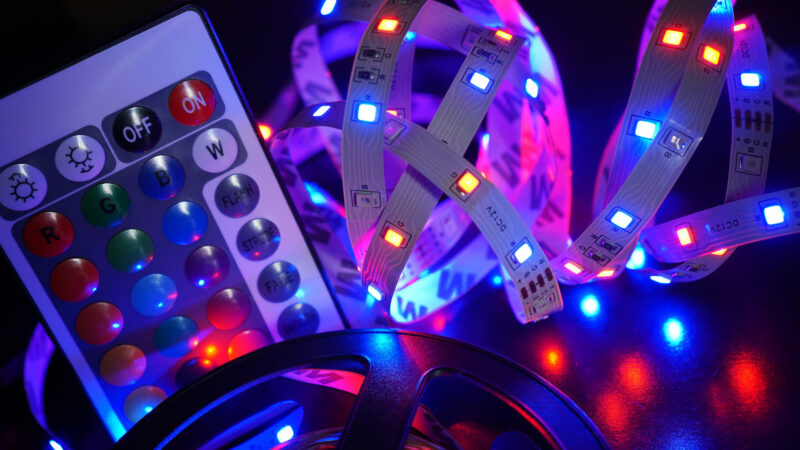
Troubleshooting Steps
- Check the battery or power source: Make sure that the battery is connected correctly and functioning. The lights may only work if the battery is high or the power source is providing enough power.
- Reset the lights: Try resetting them by unplugging them or disconnecting them from the power source for a few minutes, then reconnecting them.
- Check for interference: Ensure that other electronic devices or appliances do not interfere with the LED lights. This can cause the lights to change colors or flicker.
- Check the remote control: Ensure that the remote control is properly functioning and the batteries are not low. Check if the distance between the remote control and the lights is within the range.
- Check the controller: Check if the controller is functioning correctly and the lights are connected to the right output channel.
Adjusting or Disabling Color-changing Features
- Color-changing modes: Many LED lights have built-in color-changing modes that can be adjusted or disabled through the remote control or controller.
- Color-changing schedules: Some LED lights can change colors on a program. If you find this feature unwanted, you can turn it off in the settings or through the remote control.
- Disable the feature: If you don’t want the lights to change colors, you can disable this feature entirely through the remote control or controller.
Note that the above methods for troubleshooting and fixing common LED lights may vary by brand and model. Always check the user manual for the specific troubleshooting method.
The Effects of Temperature and Humidity on LED Lights
LED lights can be sensitive to the environment, just like us. They don’t like extreme temperatures or humidity. When it’s too hot, they can overheat and stop working.
When it’s too cold, they can flicker or dim. Humidity can also be a problem; too much or too little can cause issues like corrosion or static build-up.
So, it’s essential to keep them in the sweet spot of temperatures and humidity levels recommended by the manufacturer and ensure proper ventilation.
The Mystery is Solved
From traditional bulbs to bright and RGB lights, you now understand the inner workings of these energy-efficient, durable electronic marvels.
So go ahead, gaze up in awe at your LED lights, knowing the reason behind their mesmerizing color shift.
